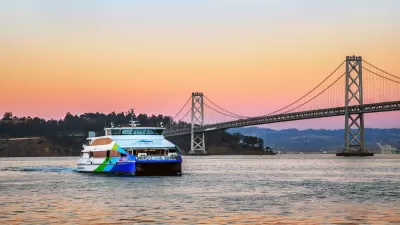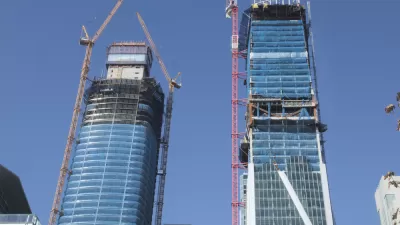Cities are becoming the new economic engines due to growing sectors in technology and knowledge production. Yet, cities must recognize with that transformation there comes not only opportunities but also new challenges.
Prior to the rise of the car and the trucking industry, cities were the best places for investment. They provided access to markets through ports, rivers, and railroads. They had large pools of unskilled labor living near factories, and they were relatively dense making business easier for firms. Significantly, capital, the cultural sociologist Zygmunt Bauman claims, was “heavy” and enmeshed in place: "Routinized time tied labor to the ground, while the massiveness of the factory buildings, the heaviness of the machinery and, last but not least, the permanently tied labor ‘bonded’ the capital. Neither capital nor labor was eager, or able, to move."
Urban centers were hubs of industry, fostering, in the words of political scientist Douglas Rae, a “civic fauna.” The rich and the poor lived close together and intermingled by participating in common civic projects. Although hardly utopias—cities struggled with public health problems, pollution, and ethnic and racial antagonism—the flow of capital through cities created jobs and a rich cultural infrastructure. But as transportation and communication technology advanced, urban investment slowed, moving away from the expensive real estate and high taxes of the city toward greener pastures in the county. As a result, many cities over the last century experienced massive unemployment and high crime as populations followed the flow of capital to middle-class enclaves in the suburbs.
Yet, today, our cities again are seeing fresh investment due to new emerging economic sectors in knowledge and technology. Instead of building factories, investments in the burgeoning knowledge economy focus on human capital, innovation, and lighter technologies. These new sectors have resulted in job growth in software and pharmaceutical development, biotech, digital entertainment, and financial innovation, among other fields.
FULL STORY: Why the New Flows of Capital Matter for Cities

Alabama: Trump Terminates Settlements for Black Communities Harmed By Raw Sewage
Trump deemed the landmark civil rights agreement “illegal DEI and environmental justice policy.”

Study: Maui’s Plan to Convert Vacation Rentals to Long-Term Housing Could Cause Nearly $1 Billion Economic Loss
The plan would reduce visitor accommodation by 25% resulting in 1,900 jobs lost.

Planetizen Federal Action Tracker
A weekly monitor of how Trump’s orders and actions are impacting planners and planning in America.

This Toronto Suburb Has More Bus Riders Than Columbus, Ohio
Brampton, Ontario used gradual improvements in service to prove that if you build it, they will ride.

Paris Bike Boom Leads to Steep Drop in Air Pollution
The French city’s air quality has improved dramatically in the past 20 years, coinciding with a growth in cycling.

Why Housing Costs More to Build in California Than in Texas
Hard costs like labor and materials combined with ‘soft’ costs such as permitting make building in the San Francisco Bay Area almost three times as costly as in Texas cities.
Urban Design for Planners 1: Software Tools
This six-course series explores essential urban design concepts using open source software and equips planners with the tools they need to participate fully in the urban design process.
Planning for Universal Design
Learn the tools for implementing Universal Design in planning regulations.
Smith Gee Studio
Alamo Area Metropolitan Planning Organization
City of Santa Clarita
Institute for Housing and Urban Development Studies (IHS)
City of Grandview
Harvard GSD Executive Education
Toledo-Lucas County Plan Commissions
Salt Lake City
NYU Wagner Graduate School of Public Service





























